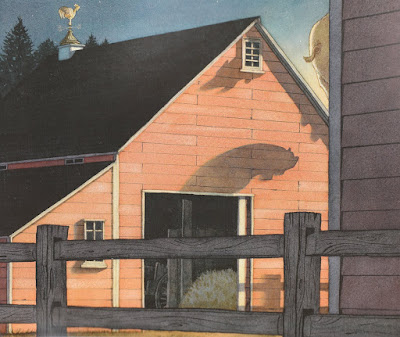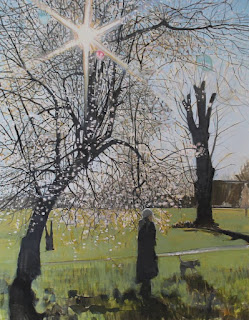If there is one place name in London that instantly brings to mind the capital’s Afro-Caribbean community its Brixton.
Like any working class area in London Brixton once had an edge, but in April 1981 this place earned particular notoriety as the scene of a riot brought about by inequality and unemployment.
On the flipside Brixton has also always been cool, diverse, creative and full of fun, with some of the best live music venues in London and some of its wildest nightspots.
Being so close to the centre of London has led to a lot of regeneration in the last 20 years.
So, for better or worse, art house cinemas, craft beer pubs and concept bars rub shoulders with exotic markets and artisan studios.
Let’s explore the best things to do in Brixton:
1. Brockwell Park

Source: chrisdorney / shutterstock
Brockwell Park
Where South Brixton, Herne Hill and Tulse Hill all meet is a graceful Victorian park that has held onto its 19th-century layout.
Brockwell Park is on a rise and has romantic views of the London skyline.
This space used to be a manor, and at the highest point stands the Georgian Brockwell Hall, which has the park’s cafe on its ground floor.
There are endless facilities at the park, including a huge playground, a paddling pool and miniature railway for kids, various sports facilities and three duck ponds.
The walled garden has beautiful arrangements of herbs and flowers, and just outside is a twee model village dating to 1943. There are outdoor events all summer long at Brockwell Park, but the big one is the Lambeth Country Show in July, for live music, parades, dance, a petting zoo, international food, a flower show and eco market.
2. Brixton Market

Source: ElenaChaykinaPhotography / shutterstock
Brixton Market
A dose of the real London, Brixton Market trades seven days a week from 08:00-19:00. The market is anchored on the pedestrianised Electric Avenue, but spills onto adjoining arcades that were built to provide permanent spaces for stallholders in the 20s and 30s.
These covered arcades are the Reliance Arcade, Market Row and Brixton Village.
For the second half of the 20th century Brixton Market was the place to go for West Indian food, fresh produce and fabrics.
And although the Afro-Caribbean community is still front and centre, the market is even more international and has over 130 independent traders.
Shop for fresh fish, meat, art, handicrafts, vinyl, antiques and handmade cookware.
Whether you’re out for tacos, Portuguese grilled chicken, Moroccan tagines, Ethiopian stews or spicy Caribbean delights, the food is incredible.
3. Electric Avenue

Source: Willy Barton / shutterstock
Electric Avenue
Suffused with the sights, sounds and scents of Brixton Market, Electric Avenue is a street with a lot to say for itself.
That snappy name isn’t new; in the 1880s Electric Avenue was the first ever market street to be illuminated with electricity.
Those lights used to hang from a continuous glass canopy that traced the shopfronts, but sadly this was damaged in the Second World War and was eventually removed.
Electric Avenue was the title of Eddy Grant’s song about the Brixton Riots, which became an international hit.
In 2016 Grant was here for the unveiling of a large “Electric Avenue” sign to cap a £1m regeneration of the street.
4. Brixton Academy

Source: Graphical_Bank / shutterstock
Brixton Academy
One of London’s premier live music venues, the 4,921-capacity Brixton Academy has booked an unbelievable roll-call of music talent since it opened in 1983. Previously this building had been the Astoria Cinema, completed in 1929. Although the lower seating was removed when the cinema was converted in the 70s, a lot of the original neo-Renaissance details remain, like a proscenium arch, false loggia, balustrade and Corinthian columns.
Name a famous rock act, from the Clash to the White Stripes, Bob Dylan and the Sex Pistols, and they’ll have played the Brixton Academy.
New Order, Pixies and many more have recorded live albums here, while the Smiths played their last ever live concert at the venue in 1986. Check the calendar and book well in advance to see your favourite band.
5. Brixton Murals

Source: DrimaFilm / shutterstock
Brixton Murals
After the riots in 1982 more attention was paid to Brixton’s socioeconomic difficulties and its need for a voice.
In response Lambeth Council commissioned a series of eye-catching murals by local artists.
These are some of the largest murals in London and nearly all have been preserved and are restored every few years.
The paintings are labelled on Google Maps, so you can take a tour through Brixton’s not so distant past.
On Stockwell Park Walk, see the Brixton Academy Mural, showing young people of different heritages having fun, or the Brixton Railway Station Murals, depicting the chaos and colour of Brixton Market as it was in the 80s.
Another sign of the times is Nuclear Dawn on Coldharbour Lane, with a skeleton and image of London in a nuclear blast.
6. Windrush Square

Source: chrisdorney / shutterstock
Windrush Square
This open space fronting the Brixton Tate Library has a name charged with meaning for the UK’s Afro-Caribbean community.
The HMT Empire Windrush was the ship that brought the country’s first immigrants from the Caribbean in 1948. After arriving they were given temporary housing a few minutes away on foot on Coldharbour Lane.
On the square’s east side are the Black Cultural Archives, housed in the former Raleigh Hall, a striking Georgian townhouse that had been abandoned for decades before it was restored in the 2010s.
Here you can view temporary exhibitions about the Black British experience and prominent black Britons.
https://www.thecrazytourist.com/














